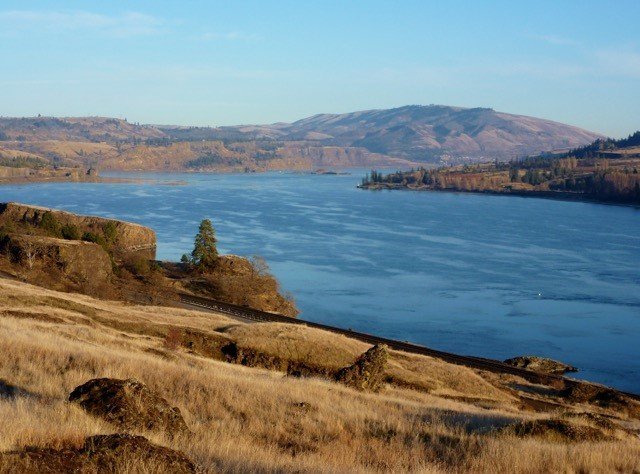Tough Places and Safe Spaces: Can Refuges Save Salmon from a Warming Climate?
Published July 18, 2023

Salmon are a defining feature of the Pacific Northwest region along North America’s Pacific coast. From time immemorial, salmon have been central to the culture, economy, and well-being of Pacific Northwest indigenous peoples, and have helped support and sustain both aquatic and terrestrial ecosystems. Today, salmon still provide an important cornerstone of Pacific Northwest culture, economy, and ecology but that role is threatened by climate change.
To spawn, salmon return to the freshwater stream they were born in. The journey from the ocean to their home stream can involve migrating hundreds of miles and many salmon do not make it, even in the best of circumstances.
Migration usually involves large amounts of energy and exposes individual salmon to physical and biological stressors. One stressor is rising water temperatures due to climate change. For cold-blooded migratory fish, higher river temperatures cause an individual to spend more energy traveling to its destination. Salmon temporarily use cold-water refuges to help them successfully migrate up a river to get to their spawning grounds. Thermal refuges, or resting areas where the temperature is cooler than in the main river, could be critical to ensuring their survival.
EPA researchers, in collaboration with the US Geological Survey, the University of Idaho, and the Oak Ridge Institute for Science and Education, studied the effects of cold-water refuges on migrating salmon in the US Pacific Northwest.
Researchers analyzed two different species: the Chinook Salmon and the Summer Steelhead. Researchers hypothesized that individuals using the cold-water refuges would conserve energy throughout the migration process.
The study site was the Columbia River Basin, where the average summer river temperatures have increased over the last 50 years. It is predicted that the Colombia River temperature will continue to increase in the future due to climate change.
Researchers used a simulation model to evaluate if the presence of a cold-water refuge minimizes stress for migrating salmon. The model allowed researchers to keep track of the overall thermal exposure to each individual salmon and determine the amount of stress a fish faces in its migration. Researchers measured this stress by calculating how many calories the fish burned in its migration.
There are many different factors to be considered when examining stress in salmon. For instance, the start of the migration time, size of the fish, and the swim speed of the fish all play a role. The two different species studied migrated at different times, the Chinook from August to October, and steelhead from June to October. This is important as the Columbia River is a dynamic riverscape, meaning that water temperatures change throughout the year.
Researchers found that cold water refuges gave salmon an opportunity to rest, conserve energy, and briefly escape dangerous temperatures. However, the length of time that salmon spent migrating increased. Even with the energy conserved in the refuges, there is an overall increase in cumulative energy used due to the increased migration time. While refuges are important, there are other factors, such as migration timing and duration, that affect the capacity of salmon to respond to climate change.
The presence of cold-water refuges improves the likelihood of Pacific salmon to survive in a future characterized by climate change. Currently, management of cold-water refuges is being examined by researchers, including ways to protect and enhance refuges. In fact, some of the most used refuges were accidentally enhanced by building causeways for highways and rail lines that allowed cold water to collect and pool behind embankments near the Columbia River.
EPA researchers worked with the states of Oregon and Washington, NOAA Fisheries, tribes, and other partners to develop the Columbia River Cold Water Refuges Plan, a scientific document with recommendations to protect and restore cold water refuges.
Cold-water refuges can increase the likelihood that salmon get to their spawning grounds and reproduce. Overall, cold water refuges can be crucial for migrating salmon as they serve as an important resting place for individuals to conserve energy and decrease the amount of thermal stress for the species.
